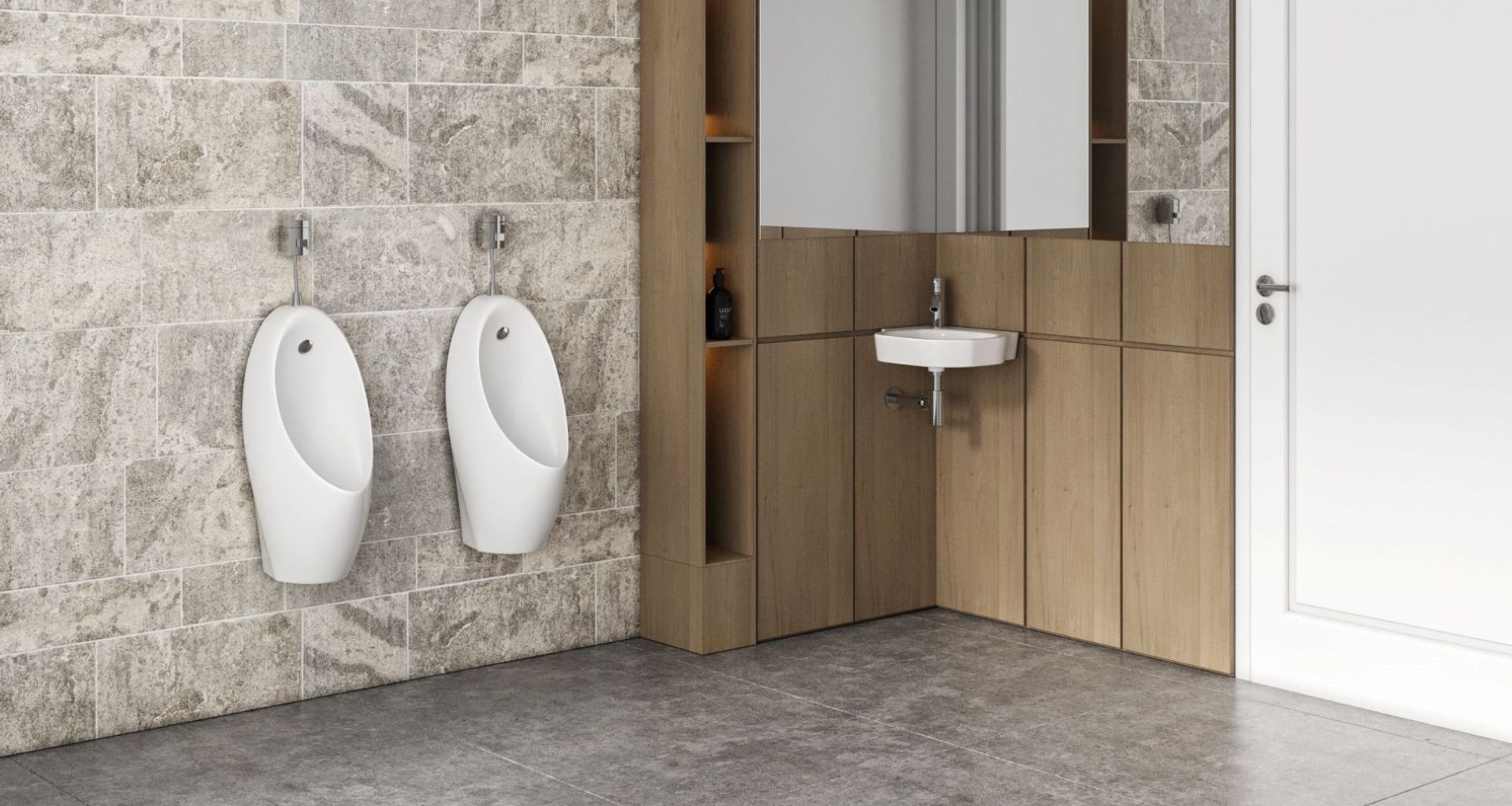Different types of urinals and how to pick the best option for your home or business
Written by
18 April 2024
•
5 min read

Urinals play a crucial role in both the residential and commercial sectors by offering an efficient, hygienic, and space-saving restroom solution. They are essential in busy commercial settings, and highly prevalent in workplaces, schools and large public venues where they help manage high traffic efficiently, reducing queues while promoting cleanliness and water conservation. They are far less common in private residences but interest in them is growing, especially in high-end homes where their versatility and sustainability credentials are increasingly valued.
Different types of urinals
There are four main types of urinals available in New Zealand, designed for different settings and uses.
Wall-mounted urinals
Also called wall hung urinals, these are easily the most common type of urinal you'll see in private, public and commercial restrooms. Made from ceramic materials like vitreous china, they come in various shapes including flat back and curved designs. They are mounted on the wall and plumbed as a back or rear inlet or top inlet model with a flushing mechanism that can be manual or automatic.
Floor-mounted urinals
A floor-mounted urinal extends from the floor to a regular standing height. Unlike wall-mounted urinals, which are attached only to the wall, floor-mounted urinals are supported by the floor, making them particularly sturdy and suitable for high-traffic areas. They can be individual units or larger units designed for multiple users.
Trough urinals
A trough urinal is a long, continuous unit that can facilitate multiple users, ideal for busy environments like schools, airports and sports stadiums. They are incredibly efficient, both in terms of space, traffic management and water efficiency, making them a necessity in these situations. As options within this, you'll find floor mounted step-on and slab step models as well as smaller wall hung models.
Corner urinals
Corner urinals are really a sub-type of the wall-mounted urinal, designed to fit in the corner of a restroom. They are good for maximising space, especially in small or awkwardly shaped spaces, while retaining all the functions of a traditional urinal.
Features to look out for
As well as deciding on the type of urinal, you'll also have an array of features to consider and decide upon. Depending on the setting and circumstances, some of these will be more relevant to you than others.
Waterless models
The waterless urinal is one of the newer innovations in recent years, operating without water for flushing by utilising a system that involves a thin surface layer of sealant liquid and a physical trap or flexible diaphragm that prevents odours. The obvious benefit of waterless models is water conservation but they also reduce maintenance with no flushing mechanism to upkeep.
Sensor operated units
These options come equipped with motion sensors that trigger flushing automatically when a user departs allowing hands free flushing. Sensor-operated urinals are hygienic and water-efficient, as they ensure flushing occurs only when necessary.
Antimicrobial surfaces
Cleanliness and hygiene are critical in bathrooms so prioritising urinals with antimicrobial surfaces and non-porous materials is recommended to prevent bacterial growth. There are constant manufacturing advances with these coatings and finishes and it's an area that can really make a difference, especially in a busy setting.
Odour control
Odour control is important in a bathroom environment, especially in enclosed or poorly ventilated spaces where urinals are often installed. Some will come with built-in deodorisers or have options you can add to standard models. Others have features in their design, like waterless urinals, that trap odours below the drain lines.
How to choose a urinal
When choosing a urinal for a home or business, it's important to first think about the setting and potential usage, picking the right type for the situation. As previously mentioned, trough urinals are well suited to high-traffic areas while wall hung urinals make sense where there is slightly less demand. Design is also important, ensuring you select those with sufficiently contoured and curved bowls that prevent splashing, look pleasing to the eye and complement the bathroom's decor and styling. A high-quality material, like vitreous china, should be prioritised for durability and longevity and thinking about what features you'd like will also help narrow down your shortlist. Last but not least, be sure that your urinal meets New Zealand building code standards, which is typically always the case when purchasing from a reputable and trusted supplier.
The cost of urinals
The cost of urinals in New Zealand varies widely depending on type, brand and features. Standard wall-mounted units can be found from around $400 but with added features, innovations, and high-quality materials, the price can rise to $1,000 and keep going to over $2,000 for luxurious, high-end models. Some features, like waterless urinals, do come at a bit of a premium but you also need to bear in mind you'll have lower utility bills as a result so there will be a return on investment. There will also be the cost of installation which can be anything from hundreds to over a thousand dollars based on the current setup and complexity of the job. Getting numerous quotes for this type of work is always advised.
Conclusion
With the importance of urinals outlined and the types, features and costs covered, you now know everything you need to know to make a great choice for your home or business. There are some great products out there and fantastic innovations developed every year so be sure to check what the latest models can offer and pick those that best suit your needs.
Related article: How to choose a toilet — a complete guide


